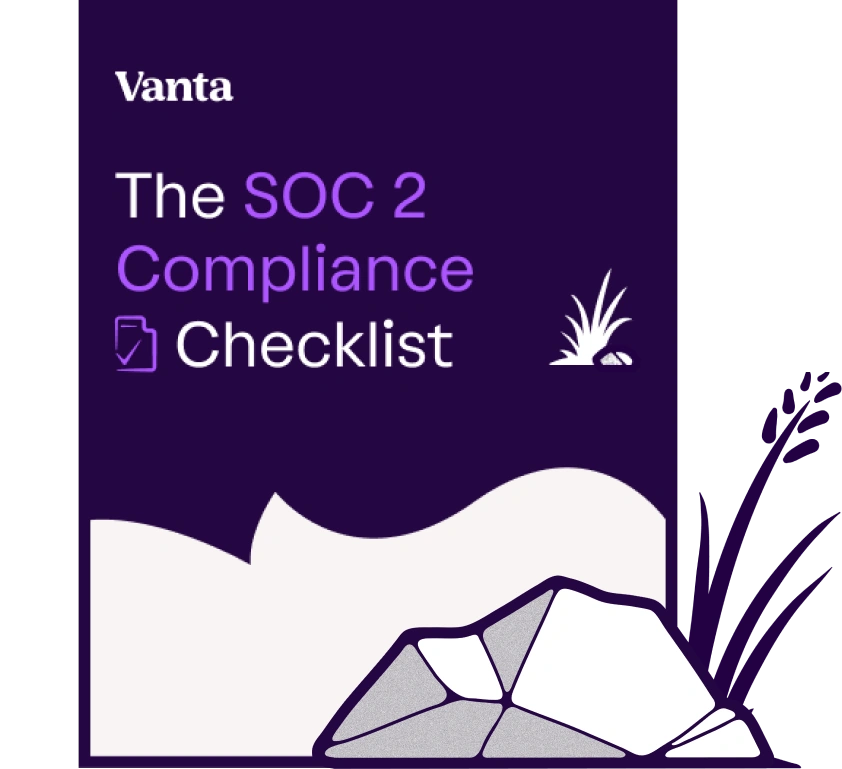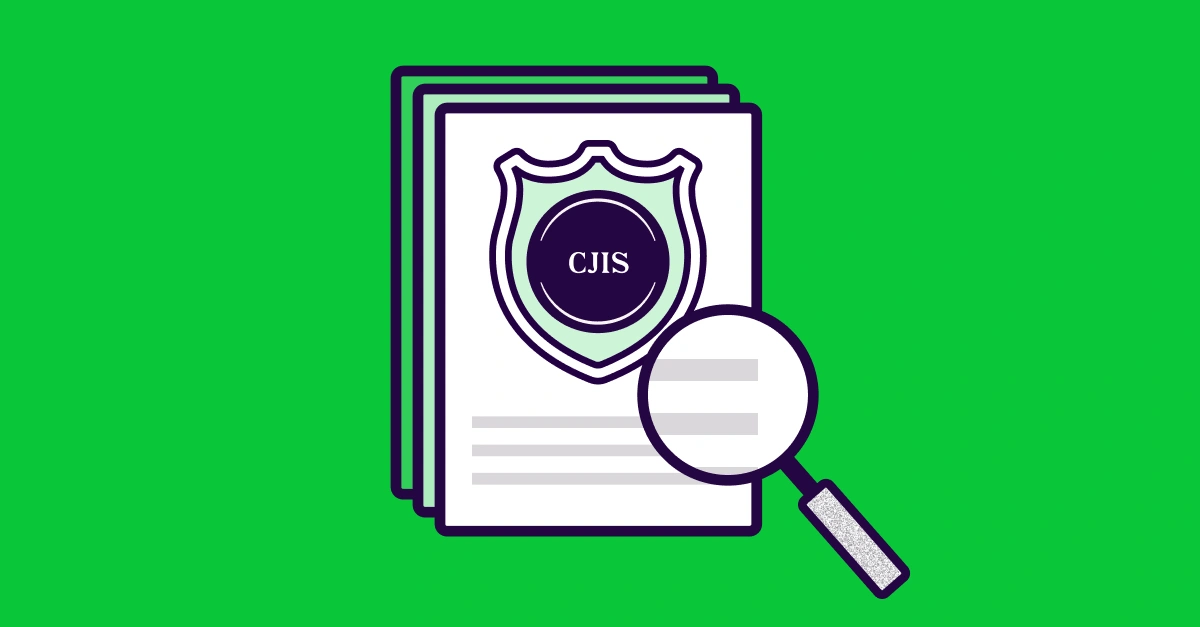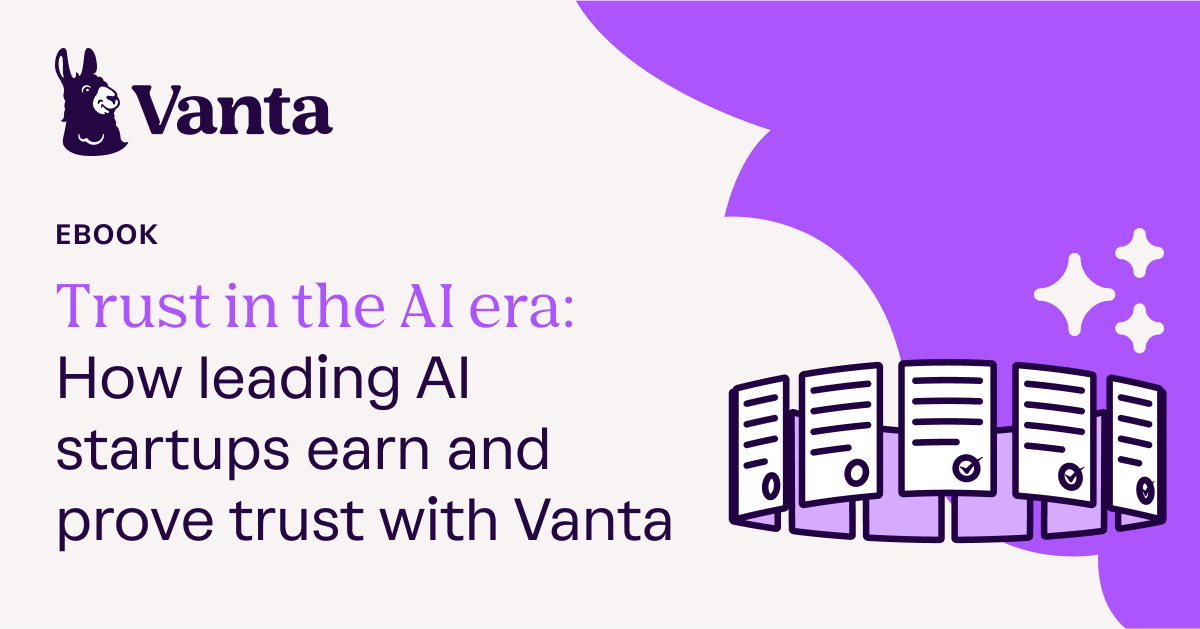Share this article

Understanding AI governance: Why most organizations feel overwhelmed by regulations
Accelerating security solutions for small businesses Tagore offers strategic services to small businesses. | A partnership that can scale Tagore prioritized finding a managed compliance partner with an established product, dedicated support team, and rapid release rate. | Standing out from competitors Tagore's partnership with Vanta enhances its strategic focus and deepens client value, creating differentiation in a competitive market. |
As AI adoption accelerates across industries, the pressure to ensure responsible and compliant use is growing just as fast. Conversations around AI governance, once niche, are now central to boardroom strategy, legal risk assessments, and day-to-day operations.
While organizations widely acknowledge the need for clear oversight, many of them are struggling to keep up. In our latest survey of industry leaders, half of the respondents said they feel overwhelmed by AI regulations.
This is a clear signal that even well-prepared teams are facing mounting pressure to stay on top of rapidly advancing technology and an increasingly complex regulatory landscape.
In this post, we’ll explore the state of AI governance today and share expert insights into how your company can confidently move from uncertainty to action.
What is AI governance?
Artificial intelligence governance refers to the policies, guidelines, and oversight frameworks that ensure businesses develop, deploy, and use AI in a safe, ethical, and responsible way.
Whether your organization is building its own models or integrating third-party tools, governance helps you identify and mitigate risks, like bias or policy violations, before they become liabilities. Usually, a group of diverse stakeholders, including legal teams, engineers, security teams, and product leaders, share and oversee this responsibility.
Strong AI governance also plays a critical role in building trust. Aligning practices with evolving standards helps your organization show accountability to customers, partners, employees, and regulators.
As new regulatory frameworks emerge, companies are investing in ISO 42001 certification, which offers a structured and credible way to demonstrate responsible AI practices.
The certification outlines requirements for managing risks specific to AI, ensuring transparency, fairness, and accountability in AI systems, and aligning AI development and use with ethical principles, legal requirements, and stakeholder expectations. It aims to reduce key risks like inaccurate outputs, regulatory noncompliance, data privacy & integrity issues, and cybersecurity threats.
By following ISO 42001, your company can enhance the way it develops and operates AI systems while conveying a strong signal of trust to your customers, partners, and regulators alike.
Why AI governance matters now
AI is advancing much faster than regulation development, creating real-world risk for your business and the users who trust it. Without clear governance, you may unintentionally deploy biased, insecure, or noncompliant systems. This can lead to privacy violations, reputational damage, loss of customer trust, and regulatory fines.
In today’s AI-everything landscape, your organization needs a reliable way to prove that its use of artificial intelligence is both secure and responsible.
This is where AI governance frameworks come in. Examples include:
- ISO 42001: A certifiable international standard that helps organizations build structured AI Management Systems (AIMS) to manage risk, promote transparency, and foster trust.
- NIST AI Risk Management Framework: A voluntary framework that helps organizations manage AI risks like bias and misinformation. It supports ethical practices and aligns with the 2023 U.S. Executive Order on safe AI use.
- EU AI Act: A mandatory regulation that classifies AI systems by risk level, prohibiting certain use cases, placing strict requirements on high-risk use cases, and setting transparency and safety requirements for organizations operating in or serving the EU.
Tools like Vanta’s AI security assessment also offer a structured way to evaluate AI-related security risks as part of third-party risk management processes—and prove your robust security posture around AI to prospects and customers.
Key challenges and concerns in AI governance
To better understand the current state of AI governance, we surveyed hundreds of organizations about their top concerns, challenges, and priorities. The data highlights where teams are struggling most and where they’re focusing their efforts to keep up.
53% of organizations feel overwhelmed by AI regulations
As AI adoption grows, compliance teams are feeling the strain. Many have to manage fast-emerging risks without clear regulatory guardrails and often without internal guidelines. Some of them also lack the cross-functional expertise required to govern AI within existing governance, risk, and compliance (GRC) frameworks.
According to recent survey data, 53% of organizations report feeling overwhelmed by AI-specific regulations, with nearly one in four describing themselves as feeling extremely overwhelmed. This reveals the real anxiety organizations feel about staying compliant in a rapidly shifting environment.
Several key challenges are driving this need for clarity—and the increased frustration. Lack of internal expertise (26%) is the most cited challenge for organizations trying to manage AI risk, with evolving or unclear regulations (23%) and fast-moving AI tools outpacing policy development (20%) not far behind.

These figures point to a growing gap between AI ambition and operational readiness. While many organizations are eager to harness AI, many are still trying to catch up on governance.
To navigate ongoing uncertainty, many organizations are turning to structured tools that make AI governance more manageable. One of these tools is Vanta’s AI Security Assessment, which can help your company evaluate vendor AI security.
If you're just beginning your AI compliance journey, the ISO 42001 Compliance Checklist provides clear guidance to help teams prepare and confidently take the first steps toward certification.
Additionally, experts recommend focusing on what really matters.
62% of leaders are very concerned about AI compliance
AI governance is no longer a theoretical concern; it’s a real and rising pressure point for organizations in 2025. As regulatory scrutiny sharpens and global frameworks gain traction, businesses are being pushed to formalize how they manage AI-related risk.
The urgency is clear: 62% of leaders say they’re very concerned about AI compliance, signaling a widespread recognition of the stakes.
In response, organizations are taking action. Forty percent already have at least one external standard certification, demonstrating early leadership in compliance. Plus, 36% are actively pursuing certification to meet regulatory expectations.
Meanwhile, just 8% have no plans to align with any external standard, highlighting how rare it is for organizations to overlook structured governance entirely.

AI governance is now a proactive business priority, with organizations taking actionable steps to mitigate risk. Over the past 12 months, 72% of organizations have conducted a formal AI risk assessment, reflecting increased awareness and accountability.
According to Vanta’s State of Trust Report, 62% of organizations planned to invest more in AI security, signaling a growing commitment to strengthen their AI governance strategies. Many are leveraging GRC platforms to better understand which frameworks apply to their use cases.
Data privacy tops the list of AI risk concerns
As AI systems increasingly handle personal and sensitive business data, privacy has become a central concern for organizations. Public scrutiny and consumer expectations around how AI tools use data are intensifying, pushing companies to take a more structured and transparent approach to governance.
When we asked respondents to select their top AI-related concerns, 63% chose data privacy and protection, making it the most frequently cited issue. Close behind, 50% pointed to security and adversarial threats, highlighting fears around data leakage and other emerging threats unique to AI. These risks pose real challenges for both internal development and third-party tools, where visibility and control may be limited.
Meanwhile, 48% cited ethical use of AI, reflecting growing awareness that responsible AI is about more than compliance. Fairness, bias mitigation, explainability, and avoiding unintended harm are also key factors.
These concerns become even more complex in vendor relationships, where blurred lines around data ownership and usage can introduce hidden vulnerabilities.
Duman highlights a critical and often overlooked question your organization should ask vendors: “The single biggest question is: How are you defining what’s yours versus mine? That will be illustrative, I think, for getting to the heart of a lot of the other concerns around AI vendors and tooling.”
His point speaks directly to the heart of privacy and ethical risk: Without clear boundaries around how they're using data, even well-intentioned vendors can become a source of exposure.
To help you manage these priorities, ISO 42001 certification offers a structured approach to aligning privacy, security, and integrity within a formal AI risk management system.

59% are very confident in AI oversight—yet few have written policies
As AI tools become more accessible across organizations, employees are increasingly adopting them without formal IT or compliance oversight—a growing trend known as shadow AI.
Without clear policies or monitoring mechanisms, your company risks overestimating how much control it actually has over AI use across teams.
While 59% of respondents in our survey say they’re very confident in their visibility into AI tools, confidence doesn’t always translate to control. According to Vanta’s State of Trust Report, only 36% have an AI policy in place or are in the process of developing one, highlighting a gap between perceived oversight and actual implementation.
This false sense of control extends to external vendors as well. Ninety-two percent of organizations say they trust vendors that use AI, but many don’t know how these vendors handle data or when AI usage shifts behind the scenes.
Even written policies alone aren’t enough. Regular reviews are just as critical to catch shifts in usage and vendor risk over time. As Duman explains, “One of my default questions when renewing a vendor, especially an AI vendor, is, has our scope of use changed since I last reviewed this?”
He notes that small, untracked changes, like a team sharing new types of data with an existing vendor, can significantly expand the vendor’s access and risk profile. A routine check-in is a crucial, often overlooked part of enforcing AI governance. Policies shouldn’t just exist; they need to keep pace as AI tools and risks evolve.
How to approach AI governance: Rules, principles, and best practices
As organizations move from awareness to action, effective AI governance requires more than just good intentions. You'll need a clear understanding of which regulations apply, the principles that should guide responsible use of AI, and the practical steps for embedding governance into real-world systems.
Know the governance rules that apply to you
AI governance regulations vary by region, and understanding which rules apply to your organization is essential.
In the EU, the AI Act introduces a risk-based approach, placing strict requirements on high-risk AI systems. The GDPR continues to shape how you collect, process, and leverage personal data that AI uses.
In the U.S., the AI Executive Order sets priorities around transparency, safety, and responsible development, especially for federal agencies. Voluntary guidelines like the AI Ethics Principles promote safe and fair AI practices in Australia and New Zealand.
Global standards like the OECD AI Principles offer broader guidance focused on trust and human-centered values.
In addition to external regulations, organizations have to manage AI risk internally. That’s where governance frameworks come into play, but be aware that they aren’t interchangeable. For example, NIST AI RMF and ISO 42001 both support responsible AI, but serve different organizational needs depending on your goals and risk profile.
It’s also important to understand how certain frameworks can work together—for instance, how ISO 42001 and the EU AI Act align to support a more comprehensive compliance strategy. Reviewing them side by side can help clarify which approach is right for your business.
Foundational principles for AI risk and compliance
Strong AI governance is grounded in a set of core principles that guide responsible development and deployment. These principles help your organization reduce risk and build trust while aligning with regulatory expectations.
Some of the key principles include:
- Fairness: Ensures that AI systems do not produce unjust or discriminatory outcomes.
- Bias mitigation: Involves identifying and addressing both data and algorithmic bias throughout the model lifecycle.
- Transparency: Calls for clear documentation and explainability, so decisions made by AI can be understood and traced.
- Privacy and consent: Focuses on protecting personal data and ensuring customers understand how businesses use their information.
- Accountability: Establishes clear ownership for AI decisions and outcomes within the organization.
- Security: Safeguards AI systems from threats, vulnerabilities, and misuse.
- Continuous improvement: Emphasizes the need to regularly monitor and update AI systems to keep pace with technological changes, data, and risk.
AI governance best practices
Effective AI governance doesn’t happen by accident. It requires cross-functional collaboration, clear processes, and ongoing oversight.
Leading organizations are building governance programs that involve legal compliance, engineering, security, and executive leadership to ensure AI decisions are responsible and aligned with business values. To support this effort, they’re adopting AI governance best practices that help standardize how AI is developed, deployed, and monitored across the organization.
Some AI governance best practices include:
- Clear policies around AI: Define how the organization can and can't use AI.
- Transparency and documentation: Keep records of how your organization builds, trains, and deploys AI to support accountability and explainability.
- Regulatory compliance: Align AI practices with applicable laws and standards in all regions where you operate.
- Continuous monitoring and audits: Regularly review AI systems to catch issues early and adapt to changes.
- Diverse stakeholder involvement: Include cross-functional teams to ensure well-rounded oversight.
- Third-party and vendor risk management: Evaluate and monitor external AI tools and services for compliance and risk.
- Incident response and accountability plans: Establish clear processes for addressing unintended outcomes or misuse of AI systems.
- Balancing ethics and innovation: Ensure responsible development without hindering innovation by integrating ethical review into development workflows.
- Role-specific AI training: Educate employees based on their responsibilities so they know how to use AI tools appropriately.
Many organizations are now turning to GRC software to help put these best practices into action. Centralizing oversight and streamlining documentation makes it easier to manage enforcement across teams.
Stay on top of AI governance with GRC compliance tools
As AI adoption grows, AI governance has become a core part of effective GRC strategies. Uncertainty around evolving regulations, gaps in internal expertise, and the absence of formal policies are overwhelming organizations.
To move from a reactive to a proactive approach, invest in systems that make oversight manageable and repeatable. With Vanta, you can scale your GRC program with tools that bring structure, clarity, and confidence to your approach.
Whether you’re getting started or refining your approach, Vanta supports your next steps with compliance tools to mitigate AI risk every step of the way.
Methodology
In May and June 2025, quantitative research conducted by Centiment was commissioned by Vanta to explore how companies are adapting governance, risk, and compliance strategies in response to AI adoption. The goal was to better understand how founders, executives, and tech leaders are managing AI risk and preparing for future regulation. The survey collected responses from 618 business decision-makers. Data is unweighted, and the margin of error is approximately +/-4% for the overall sample with a 95% confidence level.
AI governance FAQ
As organizations adopt AI more widely, questions about oversight, risk, and compliance are becoming more common. Here are answers to some of the most frequently asked questions about AI governance.
Who should be responsible for AI governance in a company?
AI governance should be a cross-functional effort. It should involve collaboration between legal, compliance, IT, data science, security, and executive leadership. Each group brings a critical perspective, from understanding legal obligations to managing technical implementation and system monitoring.
Depending on the size of the organization and AI maturity, responsibility may fall to roles like a Chief AI Officer or a Chief Risk Officer. Some may even have a dedicated AI ethics committee. What matters most is that both strategic and operational accountability are clearly defined.
The right structure will depend on your industry, your organization’s level of AI adoption, and regulatory exposure.
What are the benefits of AI governance?
Safe, responsible AI adoption helps reduce risk while empowering teams to work more efficiently and focus on higher-impact initiatives. A strong AI governance program empowers organizations to scale innovation while staying in control.
Some of the most important benefits of AI governance include:
- Increase consistency and accuracy in AI results
- Minimize regulatory and legal exposure
- Make AI decisions more transparent and understandable
- Clarify ownership and responsibility across teams
- Enable safe, controlled collaboration with AI systems
- Safeguard personal and sensitive data
- Strengthen trust with customers, partners, and regulators
What risks does AI governance help mitigate?
AI governance helps organizations address various risks, starting with technical issues like bias and discrimination, and a lack of transparency in model decision-making. It also covers critical areas like data privacy, integrity, and cybersecurity, especially as AI tools interact with sensitive and regulated data.
Beyond technical risk, governance frameworks help mitigate reputational and legal exposure. Poorly governed AI can result in noncompliance with laws and unethical practices, which can result in public backlash, loss of customer trust, and long-term consequences.
Financially, ineffective AI governance can directly impact operations, customers, and revenue. With customers increasingly concerned about privacy and how their data is managed, poor AI governance can erode customer trust and damage brand reputation. Governance provides the controls and checkpoints needed to reduce these risks before they lead to costly outcomes.
Do AI governance frameworks need to comply with existing regulations?
Yes, AI governance should align with existing regulations for your organization’s industry and region. That includes laws like GDPR and HIPAA, which set clear standards for data handling, privacy, and consent.
At the same time, newer regulations such as the EU AI Act and the U.S. AI Executive Order are shaping how organizations must govern AI going forward. Keeping pace with these regulations is essential.
In areas where laws are still evolving, proactive governance helps organizations stay on top of these changes. Mapping internal policies to relevant compliance requirements ensures your program is both defensible and adaptable.





FEATURED VANTA RESOURCE
The ultimate guide to scaling your compliance program
Learn how to scale, manage, and optimize alongside your business goals.


















.png)
.png)









.svg)
.svg)
.png)
.png)
.png)